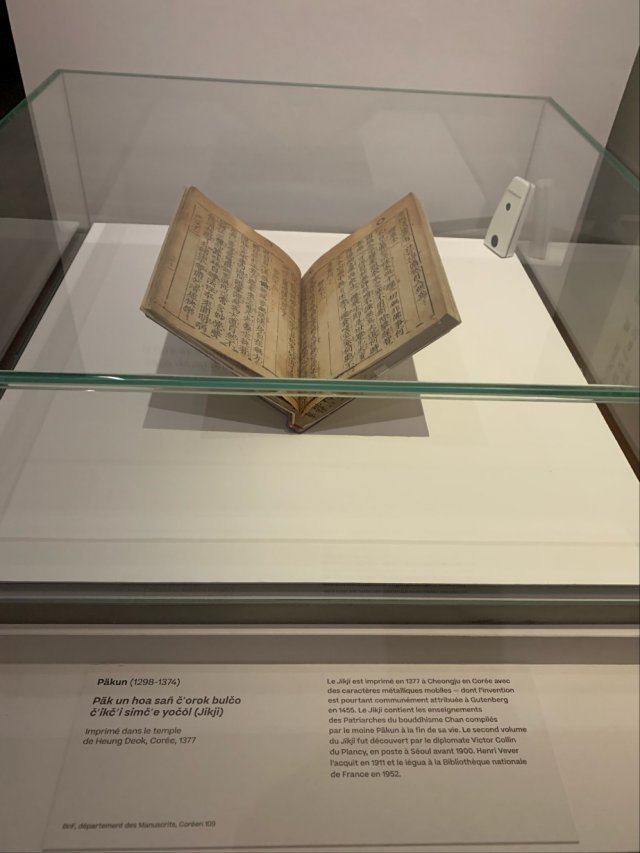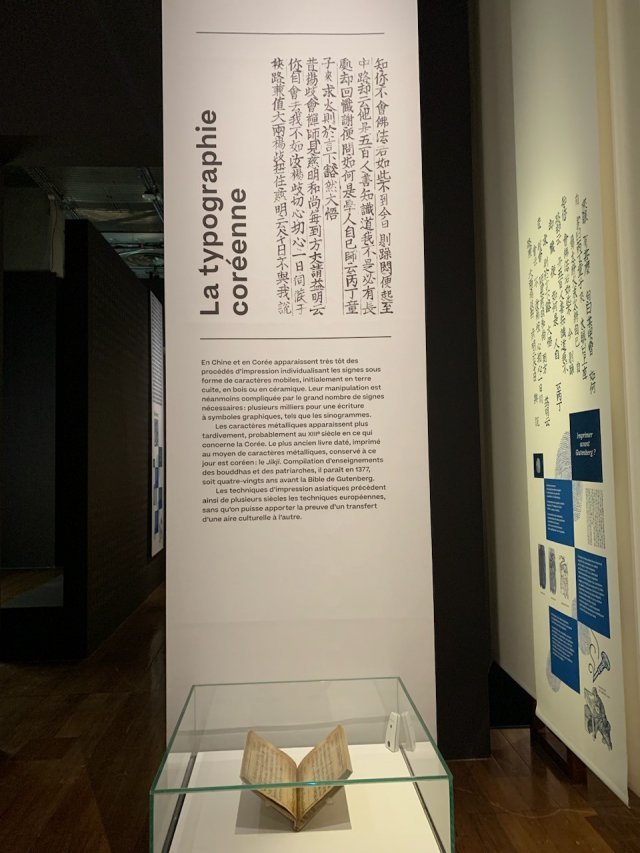The real thing of Jikjisimcheyojeol (jikjisimcheyojeol), the world’s oldest metal type printed book, will be unveiled in France after half a century.
According to the Cultural Heritage Administration on the 11th, the French National Library in Paris will be holding ‘Print! Gutenberg’s Europe’ exhibition opens and Jikji is presented.
In this exhibition dealing with the printing technology of mankind, Jikji is the first to point out the invention and history of printing technology. The oldest extant Western woodblock print, ‘Prota Woodblock’ (1400), and Europe’s first metal movable type ‘Gutenberg Bible’ (1455) are also on display. “Jikji has been recognized for its importance as the world’s first metal movable type,” said an official from the Overseas Korean Cultural Heritage Foundation.
 Jikjisimcheyojeol, the world’s oldest metal type printed book. The French National Library has been working on ‘Print! Gutenberg’s Europe’ exhibition is held and the actual Jikji is unveiled for the first time in 50 years. Courtesy of the National Library of France (BnF)
Jikjisimcheyojeol, the world’s oldest metal type printed book. The French National Library has been working on ‘Print! Gutenberg’s Europe’ exhibition is held and the actual Jikji is unveiled for the first time in 50 years. Courtesy of the National Library of France (BnF)Jikji was compiled by monk Baekun (1298-1374) from the words of high priests at the end of the Goryeo Dynasty. 78 years earlier than the Gutenberg Bible. The full name is ‘Baekunhwasang Green Buddha Jogjisimcheyojeol’, and it was originally two volumes, the first and the second, but the remaining one is the second volume.
Jikji was collected by Colin de Plancy (1853-1922), a Frenchman who served as an agent minister in Korea at the end of the Joseon Dynasty, and exhibited for the first time at the 1900 World Exposition in Paris. Afterwards, it was donated to the French National Library in 1950 according to the will of a French art collector who purchased Jikji at an auction.
It was buried in the library for a long time, but in 1972, the late Dr. Park Byung-seon (1928-2011), who worked as a librarian, rediscovered it and made its existence known to the world. Following the ‘World Book Year’ in 1972, the real thing was finally revealed at the ‘Treasures of the Orient’ in 1973. It has been stored in storage for 50 years. In recognition of its printing history, it was registered as a UNESCO World Heritage Site in 2001.
 Jikjisimcheyojeol, the world’s oldest metal type printed book. The French National Library has been working on ‘Print! Gutenberg’s Europe’ exhibition is held and the actual Jikji is unveiled for the first time in 50 years. Courtesy of the National Library of France (BnF)
Jikjisimcheyojeol, the world’s oldest metal type printed book. The French National Library has been working on ‘Print! Gutenberg’s Europe’ exhibition is held and the actual Jikji is unveiled for the first time in 50 years. Courtesy of the National Library of France (BnF)During the exhibition period, an event will be held in France to promote the value and meaning of Jikji. Overseas Cultural Heritage Foundation, the Jogye Order of Korean Buddhism, and the Korean Cultural Center in France will hold a conference at the Korean Cultural Center in Paris on the 13th to discuss the background of the compilation of Jikji and to discuss the cultural heritage of Korean Buddhism in printing.
Monk Beomjong of the Jogye Order of General Affairs will introduce the excellence of Jikji and the cultural heritage of Korean Buddhism at this conference. The Jogye Order said, “Monk Beomjong will explain the value and meaning of Jikji’s Buddhist Seon sayings locally, and the characteristics of Chinese Seon and Korean Ganhwa Seon.” It also introduces excellent Korean Buddhist culture from Unified Silla to the Joseon Dynasty, such as the Jekyungpan (1237-1248).”
Source: Donga
Mark Jones is a world traveler and journalist for News Rebeat. With a curious mind and a love of adventure, Mark brings a unique perspective to the latest global events and provides in-depth and thought-provoking coverage of the world at large.